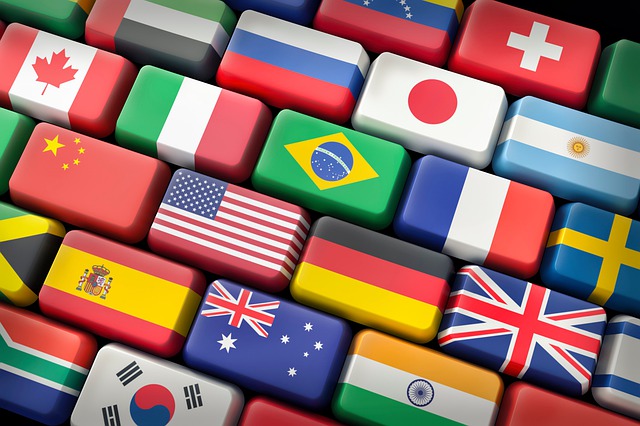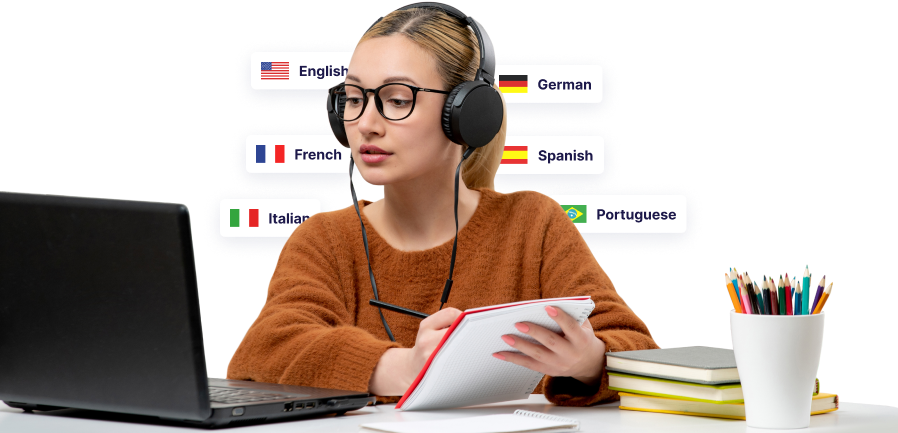Rapid Translate Team
Creating multilingual content involves a strong consideration of your target market. One major ordeal people have to face is choosing between translation vs localization. While many often confuse both terms, they are unique concepts with outstanding differences.
Knowing the key differences between these processes is crucial to exciting them properly. This is a significant step for businesses and individuals to choose the right service for their purpose.
This blog post highlights these differences. Read on to identify the unique features of translation and content localization.

Table of Contents
What Is Translation and Localization?
Translation and localization are language solutions that convert text and content into different languages. Any business seeking global expansion or content production for the international market needs these solutions. Knowing what translation and localization are will help you understand each of them. Let’s look at the definition terms.
What Is Translation?
Translation involves converting written text from one language (source language) to another (target language). However, this process covers various materials and content. It also extends to providing language assistance in multiple forms. So, what is translation, as experts would define it in the business industry?
Translation converts business content from its original language into a different language. This process covers various content, such as ebooks, apps, brochures, web content, and audiovisual material. It allows businesses and individuals to modify existing content to reflect the accurate original meaning in a target language.
Translating a website or business material makes it usable and accessible to local customers.
For example, when you convert a brochure initially written in English to any language your target audience prefers. The most obvious business translations are those used to promote products and services or provide information to customers.
However, translation for business purposes extends beyond this level. It covers language comprehension for potential partners and employees in the international market. It allows customers and employees to feel included in a marketing process. This is the common aim of localization and translation projects.
In addition, several ways exist to translate content, ranging from machine to human translation. Typically, machine translation tools offer low accuracy at lower prices. On the other hand, human translators are more expensive but offer better quality.
Although many human translators use translation software, this only helps to make the process faster and easier. Some companies may invest in an in-house team of non-professional translators.
However, the fate of the company’s marketing strategy depends on working with experienced and expert linguists.
What Is Localization?
Localization is a more extensive and specialized method of modifying content for a specific target market. It adapts content and elements to better suit the cultural preferences of consumers in a specific region. You’ll often find out that people use localization in the business world. So, what is localization?
Localization involves adapting a product or content to suit a specific cultural context. It may completely alter the tone of a text, idioms, and specific terms to accommodate cultural differences. Unlike translation, which sticks closely to the source content, localization creates something understandable and relevant to its audience.
It prioritizes its target audience’s culturally specific experience over word-to-word meaning. Localized content depends on a target market’s cultural preferences, desires, and expectations. This affects how the same source content appears in different markets.
Similar content localized for two different audiences may seem unrelated, depending on the similarity of both cultures. Localization may apply to a website’s presentation, design, and functionality. It may also adapt elements like units of measurement, payment options, date and time format, currency symbols, and product dimensions.
Apart from websites, localization may apply to software applications, marketing content, customer support, social media accounts, and more.
Localization ensures the product or content feels relatable and natural to the local audience. Overall, localization and translation aid communication at different levels.

What Is the Difference Between Translation and Localization?
The key difference between translation and localization is adapting text or media to a specific region and culture. The differences between the two processes are broad, requiring different experience and skills. Another difference between translation and content localization is the focal point.
While translation focuses on conserving the texts’ original meaning, localization considers the linguistic expression in a local market. Translation is just one component of localization, which involves translating text and content into a particular language. Localizing makes it available to a target audience.
It is essential to pay great attention to detail and understand the cultural references during the process. Additionally, localization involves more technical aspects than translation. It involves considering color, currency, measuring units, date formats, symbols, slogans, and imagery in foreign markets.
For example, white represents purity in Western cultures but represents death and mourning in Eastern cultures.
Any business hoping to get the perfect market share must consider the representation of these elements in various cultures. Localization also involves considering text lengths and directions for each culture.
Several legal requirements also differ in different markets, which requires consideration during localization. For example, various laws and regulations regarding privacy policies, terms and conditions, cookies, etc.

Real Life Localization Examples
Localization has helped several companies in various sectors reach their target audience in foreign markets. Many companies continue to incorporate this process into their marketing strategy.
Here are some real-life localization examples to help you better understand the differences between translation and localization.
1. Coca-Cola
In 2011, the Coca-Cola company began its “Share a Coke” campaign in Australia. This marketing strategy focused on engraving about 150 popular names on its products. The strategy eventually brought enormous returns for the company.
After this, the brand modified its strategy to resonate with its global customers.
A simple translation process could have changed the Australian names in different countries’ native languages. However, the consideration for localization made it adopt culturally acceptable nicknames to enter various local markets, such as the Chinese market.
To enter the Chinese market, Coca-Cola used nicknames like “Classmate” and “Close Friend” rather than regular first names. This strategy maintained the company’s acceptance by respecting the formality with which Chinese customers use first names.

2. Spotify
Spotify is popular for personalizing content for its global audience. One of its major strategies to enhance user experience (UX) is translating text into the appropriate native language. It also considers and highlights the cultural references to each region’s traditional music and holidays.
In addition, Spotify adjusted its recommendation engine to allow localized music suggestions. This way, its users can discover popular music in specific cities and regions in the country.
Spotify also uses hyper-localized marketing and advertising to reach its potential users.
This made its potential customers feel understood and recognized. The move identified the platform as a support for navigating their daily struggles.
3. Notion
Notion has always catered to an international community of users from the beginning.
Localization has been a vital element to its success. Notion typically helps individuals and companies organize and manage their teams with an all-in-one workspace.
However, each region’s experience didn’t promote the comfort that aligns with Notion’s mission. The company began localizing by creating a central hub for every content asset needing translation.
This covered over 251,000 words across its app, websites, templates, case studies, and help guides. This action resulted in a database of content that users could optimize in any language.

What Is a Locale?
A locale is a parameter that describes a user’s language and any unique preferences they want to see in an interface. A locale identifier usually comprises at least a language and region identifier.
If you are familiar with localization processes, hearing this term must have made you ask, “What is a locale?”
A locale comprises website content, interface, and settings tailored to resonate specifically with viewers from a given country. It is a set of website parameters defining the user’s language, region, and other preferences. A locale covers the cultural, linguistic, and regional settings that affect content presentation.
For example, “en_US” represents English as used in the U.S., while “en_AU” represents English in Australia. A locale is vital for adapting software to different cultures and regions in software localization. This helps to enhance the UX in other countries and regions.
Additionally, a locale covers elements like date and time formats, currency symbols, number formats, sorting rules, and units of measurement. However, a locale has its application in localization and translation processes.

Translation vs Localization: Making a Choice
Now that you know the differences between these two processes, you might wonder which one you should choose. Well, it depends on what you need for your project and goal. We’ve identified various instances where you’ll need to apply each solution.
Where You Need Translation
Translation is perfect for converting text from the source language to other languages. You should choose this process to transfer the content’s original meaning into these languages. Here are the instances where a translation is perfect:
- Medical records and documents
- Email communications
- Training manuals
- User manuals
- Product descriptions
- Brochures
- Civil documents
- Legal documents
In general, any content that doesn’t require cultural adaptation requires translation. Sometimes, you may need specialized services like notarized and certified translations.
Rapid Translate offers outstanding certified and notarized translation services for various purposes.
Where You Need Localization
Localization is best for adapting your content to a specific market or region. It is generally helpful for any marketing content in another cultural context or foreign market.
Luckily, you can get high-quality localization translation at Rapid Translate. Here are some examples of contents and assets needing this service:
- Marketing websites or campaigns (e.g., social media posts, ads)
- Web or mobile apps
- Packaging and labels
- Brand names and slogans
Typically, a translation process covers more language aspects than localization. This is why it requires skill and expertise to represent the necessary elements in each process. While this settles the debate of translation vs localization, you need to get the best of both processes.
Getting the best of both depends on working with language solution experts with experience in the industry.
Fortunately, working with Rapid Translate allows you to get both services. Our professional services provide premium quality regular and localization translations in over 60 languages.
Rapid Translate has you covered for your business and personal projects. Our amazing services can expand your global reach and elevate your communication. Order now to experience the power of effective language solutions!





